Press Release
MineBest: The rising interest of Mining in North and South America
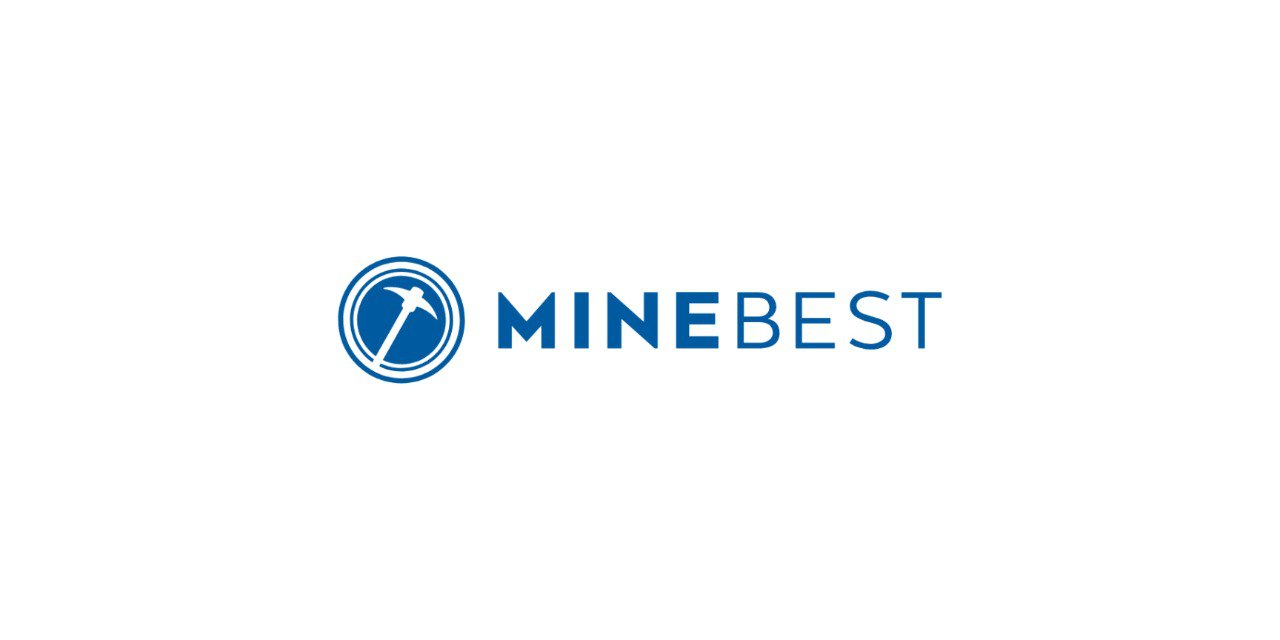
It must be apparent to everyone already that some countries are more welcoming than others when it comes to cryptocurrency regulations. Regulations are a function of the nation’s government, but there is an asymmetrical distribution of interest in cryptocurrencies from one country’s population to another. There are various reasons for this disparity in engagement. Depending on how literate the population is, the geopolitical circumstances in the region, the monetary situation of the area, friendliness of the government on blockchain/crypto regulations, and a few other factors, we can see a clear correlation on the population’s interest in cryptos.
However, when it comes to the interest in mining cryptocurrencies, factors that are contributing to a country’s interest are fewer. It generally comes down to 2 axioms: how cheap is electricity and how friendly the nation’s government is. Looking at these primary questions closely shows why there is a rising interest in crypto mining in the western hemisphere. Let us take a closer look at it.
Rising interest in cryptocurrency mining in South America
Bitcoin’s use case for protection against inflation was glaring in two of the largest South American nations, Venezuela and Argentina, both being in the top 5 countries with high inflation rates. Bitcoin along with other cryptocurrencies became popular in these countries as people scrambled to protect any value of their assets as they could when hyperinflation hit.
People living in Venezuela were troubled because of the depleted currency and situation of high inflation. But in Venezuela, the energy is free, which means only luck and capital is required, and it can be a paradise for crypto miners.
While many countries have seen growth in crypto mining this year, ultra-low utility rates and the resurgence of capital controls are helping increase gains for miners in the South American nation. Few experts think that it’s yet another instance of Argentines’ sustained capability to bend the nation’s heretical policies to their benefit. Highly subsidized power prices have also led to a mining boom in Argentina.
El Salvador became the first country to give Bitcoin legal tender status on June 9. Another Latin American country, Paraguay, has shown interest in adopting Bitcoins into its monetary ecosystem.
Rising interest in cryptocurrency mining in North America
While China remains a clear leader in Bitcoin mining hashrate share, this chart by Cambridge Centre for Alternative Finance shows that the USA is second. Some US companies believe that they can get some of the mining shares from China and the shift is accelerating.
There is evidence for this belief. Foundry, a subsidiary of Digital Currency Group (DCG), a crypto conglomerate, recently announced it would spend $100 million on mining initiatives. Foundry has quickly risen to be a top 10 mining pool.
Canada with its naturally cold climate, favorable regulatory framework, and relatively cheap electricity is good for cryptocurrency mining. Hydroelectric plants in Quebec have been especially attractive sources of energy for miners, although the industry is not exclusive to that region.
Few Chinese miners have begun shifting operations to the US and Canada to escape their home nation’s regulations and uncertainty. The influx of mining activities to these counties brings good news for employment. There are reports out already about mining companies creating jobs in rural America.
Another reason for the rising crypto mining activities in North America is the recent accelerated push towards renewable mining. Elon Musk added fuel to the Bitcoin energy debate, sparking a bearish trend in Bitcoin which it is yet to recover from. However, there is clear evidence that the miners have responded quickly to work towards the 50% renewable mining goal presented by Musk.
North America may account for 10% to 15% of the global hashrate currently, but if the trend continues, we can see it push towards 25% of the market share. However, this shift in hashrate will only be possible by world-class infrastructure providers. MineBest, a global company founded in 2017 specializing in cryptographic computing activities, provides professional hosting services for both Bitcoin and Altcoins.
Additionally, South America is an emerging market for crypto entities, over the years the communities have shown great progress in adopting crypto and mining opportunities. Taking advantage of this mega trend, MineBest is exploring opportunities to expand their presence in the LATAM region and help achieve their vision of building data center facilities in various capacities for providing professional hosting services of mining equipment in South America.
Press Release
Following $600M Token Launch, EstateX Names Former RE/MAX CEO as New Web2 Head

In the wake of one of the most successful token launches of the year, EstateX is proud to announce the appointment of Steve Craggs as its new Chief Executive Officer of Web2.
Formerly the CEO of RE/MAX England & Wales, Steve Craggs brings decades of leadership in real estate, business development, and international expansion. Under his guidance, RE/MAX England & Wales solidified its presence in one of the UK’s most competitive markets. Now, he joins EstateX at a pivotal moment in the project’s journey, just days after the $ESX token debuted to a $600M fully diluted valuation and secured listings on Kraken, MEXC Global, HTX, Raydium, and Uniswap.
Steve’s appointment reflects EstateX’s commitment to bridging traditional real estate expertise with Web3 innovation. With his deep understanding of property markets and investor behavior, he will lead the next phase of the company’s roadmap, scaling real-world property integrations, expanding the AI-powered Homie ecosystem, and positioning EstateX as a global leader in tokenized real estate.
Steve Craggs said: “I’ve been watching the guys in EstateX over the past few years work tirelessly to achieve this historic launch, and I’m so very proud to accept this appointment. I believe together we can now add the additional layers that will set EstateX apart from the rest. We have seen how partnerships with DAMAC of other RWA projects significantly boosted the presence of the RWA arena, a big turning point for the crypto industry. My new position as CEO allows me to work more closely with my global connections and bring multiple significant partnership deals to EstateX. Tokenisation of Real World Assets is the future of real estate and I’m very excited to be driving this global machine.”
EstateX’s early momentum continues to pick up speed, bolstered by a wave of strategic hires, upcoming real-world property announcements, and a blockchain infrastructure designed for onboarding the next generation of RWA (real-world asset) projects.
With a CEO rooted in traditional real estate and a team fluent in crypto-native culture, EstateX is uniquely positioned to redefine property ownership and access on a global scale.
About EstateXEstateX is a Web3 platform revolutionizing real estate through asset tokenization, AI powered financial tools, and blockchain infrastructure. By allowing fractional ownership and easy on-chain access to property markets, EstateX is creating a new gateway to the global real estate investment.
Check out $ESX today:
Token: tge.estatex.eu
Telegram: https://t.me/estatexofficial
LinkTree: linktr.ee/estatexeu
Press Release
Qubetics Near Listing, Mantle Dips, Gate Slips: Which Is Among the Top Cryptos to Watch?

The crypto market is evolving fast, but only a few projects are truly aligning with the future of Web3 usability and multichain access. Qubetics is now at the center of that conversation, having just launched its non-custodial multi chain wallet that lets users manage assets across Ethereum, BNB Chain, and Polygon, all without relying on third-party tools. Meanwhile, its ongoing presale reached Stage 37, with only 10 million tokens remaining at $0.3370, signaling urgency and growing market confidence.
In parallel, Mantle (MNT) has seen a minor price dip to $0.6361, offering potential entry for investors looking to accumulate scalable Layer-2 infrastructure while prices are low. Despite the drop, developer activity and upcoming roadmap catalysts keep Mantle relevant in discussions about long-term utility-based altcoins. For those looking for discounted exposure to Ethereum-based scaling, this could be a calculated risk worth considering.
Gate (GT) has declined by 2.13% to $16.95 on the centralized exchange front, raising questions about short-term sentiment around CEX tokens. However, with Gate.io’s expanding ecosystem including new staking features and lending tools, some people still view it as a steady, if slower-growth, asset. With each of these coins representing a different segment of the crypto world, the key question becomes: which one truly belongs among the top cryptos for massive growth right now?
Qubetics ($TICS) Stealing Spotlight with Interoperability
The Qubetics Network is set apart primarily by its strong emphasis on interoperability. Unlike many blockchain networks that operate in silos, Qubetics is designed to be a Web3-aggregated chain.
This means it integrates multiple blockchains, including Bitcoin, into a unified framework. Such architecture allows cross-chain transactions, data sharing, and asset transfers to occur effortlessly and securely.
This interoperability is crucial for expanding decentralized application (DApp) functionality and enhancing user access. Developers gain a cohesive environment where diverse ecosystems collaborate rather than compete. Leveraging cross-chain validation for enterprises and users reduces friction, increases scalability, and boosts the overall security posture.
Qubetics Presale Surge: 10x+ Return Potential in Final Stage
Latest News: Qubetics crypto presale enters its final Stage 37, only 10 million $TICS tokens left at $0.3370, with over 515 million sold and $18 million raised.
Early adopters are positioned for immediate upside as the token is projected to list near $0.40, a committed 20% gain at launch. Bigger buyers have a shot at dramatic upside, $7,000 invested could yield over $300,000 if $TICS rises to $15.
With supply slashed from over 4 billion to 1.36 billion and 38.55% allocated to the public, there’s a scarcity model similar to legacy index strategies—making this presale a leading purpose-fit engine among top cryptos for massive growth.
Qubetics’ mainnet launch in Q2 2025 adds to the credibility, early holders are locking in both future functionality and token price appreciation before full ecosystem rollout.
Qubetics Gears Up for Top Exchange Listing
What truly cements Qubetics’ breakout potential is its imminent listing on a top 10 global crypto exchange. This event alone is projected to increase price by 20%, immediately benefiting presale participants.
Mantle (MNT) Drops to $0.6361: Dip Could Be Entry Point for Growth
Mantle has retraced to $0.6361 with a soft drop of 1.08% on $130 million 24-hour volume. Known for its scalability enhancements and L2 value, Mantle’s dip softens the short-term sentiment—yet many analysts still consider it among the top cryptos for massive growth, citing its performance on network adoption and developer buildout post-Upgrades A and B.
A declining token price increases entry opportunity if its roadmap continues as planned. Investors may get L2 infrastructure exposure at reduced cost before the following catalyst events.
Caution is still warranted—network maintenance and gas dynamics must sustain user growth before declaring this a strong buy among growth leaders.
Gate (GT) Steady Amid Slight Decline
The Gate token dips to $16.95, down 2.13%, with a daily volume of $5.15 million. Gate is used within the Gate.io ecosystem for trading discounts, staking rewards, and governance voting. While usage remains stable, the declining token value reflects user sentiment lag.
Still, Gate.io’s growing user base and new CEX features (like C2C lending and derivatives) suggest a long-term risk-adjusted opportunity, putting GT in contention as a steady top crypto for massive growth based on exchange fundamentals.
But token economies on centralized platforms often underperform compared to utility-driven chains, so GT is best as a complement, not a core growth pick.
Conclusion:
While Mantle and Gate offer entry points based on infrastructure discount and ecosystem familiarity, Qubetics is a top candidate for the top cryptos to watch. With a use-case backed multichain wallet rollout, final presale scarcity, and planned mainnet launch, investors see utility and upside.
Mantle and Gate are viable for lateral infrastructure diversification, but neither offers the multi-dimensional functionality nor growth mechanics that Qubetics does. If you’re building a high-conviction altcoin strategy, Qubetics should be your headline.
For More Information:
Qubetics: https://qubetics.com/
Presale: https://buy.qubetics.com/
Telegram: https://t.me/qubetics/
Twitter: https://x.com/qubetics/
FAQs
1. Why is Qubetics a standout among the top cryptos for massive growth?
Its multichain wallet solves real-world usability and security issues across networks, combining presale scarcity with ecosystem integration.
2. How much ROI could early Qubetics investors expect?
Base presale gains are 20% at launch. If Qubetics hits $5–$15, ROI ranges from 10x to nearly 50x—strong growth target for altcoin investors.
3. Should I buy a Mantle now?
Mantle’s dip enhances value entry on an L2 scaling chain—but confirm upcoming roadmap updates before buying.
4. Is Gate a good investment at $16.95?
Gate token offers are upside linked to its exchange activity but exchange tokens depend heavily on volume and fee structure, limiting explosive growth.
5. Should I invest in all three?
Yes — Qubetics provides multichain utility, Mantle gives L2 scalability exposure, and Gate adds CEX-linked tokens. Diversifying across them balances innovation and stability.
Press Release
Cautious Moves for Ethereum, Rising Pressure on Hedera, and a $10.6M Milestone for Unstaked

In a market where sentiment shifts fast and narratives age even faster, Ethereum and Hedera are walking two very different paths, but both are converging around uncertainty. Ethereum is trading near a critical support level, struggling to maintain bullish momentum despite encouraging network growth and progress on the regulatory front. Meanwhile, Hedera’s price action is tightening, forming a chart pattern that often precedes big moves, yet the direction remains undecided.
During this back-and-forth, Unstaked has raised $10.6 million through its ongoing presale, attracting serious capital without the typical marketing blitz. It’s not trending for hype, it’s trending because early investors see structure, scalability, and a well-incentivized ecosystem.
Ethereum Stalls Near Key Support Despite Network Growth
Ethereum (ETH) is trading around $2,500, supported by a surge in new address creation, which has grown by nearly one-third compared to the same time last year, according to Santiment. This growth aligns with positive momentum surrounding the GENIUS stablecoin bill, which passed the U.S. Senate and is now awaiting House approval. If enacted, it would mark the first major crypto legislation in the U.S., potentially boosting institutional confidence.
President Donald Trump has urged swift passage of the bill, calling it a turning point for U.S. dominance in digital assets. Meanwhile, Ethereum continues to lead with a $126 billion stablecoin market cap on its Layer 1, representing over 50% dominance.
Technically, ETH is holding critical support at $2,450, backed by key moving averages. However, with declining volume and sideways indicators like RSI and Stochastic, momentum is fragile. A breakdown below this level could send ETH toward $2,110, while a move above the 200-day SMA may revive bullish sentiment and target higher channel levels.
Hedera Compresses as Technical Risk Builds
Hedera’s native token HBAR has dropped sharply to $0.1450, its lowest level since April 9 and about 35% below its May peak. This decline coincides with the formation of a death cross pattern on May 30, where the 50-day and 200-day EMAs crossed, a signal often associated with extended bearish trends. Despite the negative price action, Hedera announced a major ecosystem update: AUDC, an Australian company, launched AUDD, the first Australian dollar stablecoin on the Hedera network. AUDD boasts fast settlement and low fees, marking the first commercial use of Hedera Studio.
However, the network’s stablecoin supply has collapsed 82% from $216M to just $40M, raising concerns. Competing chains like Sonic and Unichain now hold over $380M in stablecoins each. Meanwhile, futures open interest in HBAR has dropped to $217M, down from a $308M high. Technical indicators such as RSI and MACD also continue to fall. If the downturn continues, price could slide toward $0.1200, unless it breaks resistance at $0.1855.
Unstaked at $0.012091: Quiet Execution, Real Utility, and $10.6M Raised
While Ethereum flirts with its technical floor and Hedera battles a confidence gap, Unstaked is moving forward with purpose. Priced at $0.012091, and targeting a launch price of $0.1819, Unstaked offers more than just upside, it offers clarity. The project has already raised over $10.6 million and completed 22 presale stages, all without influencer marketing or forced virality. It’s gaining traction because the fundamentals are doing the work.
Unstaked allows users to deploy autonomous AI agents that manage, grow, and engage online communities across platforms like X and Telegram. These agents generate real, on-chain performance data that ties directly to wallet ownership. Unlike passive tokens, Unstaked’s ecosystem is built for active participation, where only effective agents are rewarded through a transparent Proof of Intelligence system.
Adding fuel to its growth, Unstaked has launched a $1,000,000 giveaway, one of the largest presale-based campaigns in the space. 20 winners will each receive $50,000 in $UNSD, rewarded for completing tasks, referring others, engaging on social platforms, and purchasing a minimum of $100 in tokens. This isn’t a hype stunt, it’s a well-designed mechanism to bootstrap community contribution and filter for real users.
With an MVP on the way and multiple CEX listings planned, Unstaked is set to enter the market with strong liquidity and measurable utility. There are no private allocations, no hidden terms, and no speculative promises. For buyers seeking early positioning in something that’s functioning before it’s fashionable, Unstaked checks all the right boxes.
Wrapping Up!
Ethereum is holding the line, Hedera is testing its footing, and Unstaked is simply moving forward. In a market where hesitation can be costly, Unstaked is executing on a roadmap grounded in user mechanics, on-chain performance, and ecosystem incentives. It’s raised $10.6 million not through buzzwords but through visible progress. The contrast is clear. Ethereum and Hedera may both regain momentum in the right conditions, but right now, their paths are uncertain. Unstaked, by comparison, is operating with focus, growing with intention, and offering early participants a quantifiable advantage.
With 28x potential, a $1M reward structure, and functional technology already deployed, this is not just another token, it’s a platform positioning itself to define the next cycle.
Join Unstaked Now:
Presale: https://presale.unstaked.com/
Website: https://unstaked.com/
Telegram: https://t.me/UnstakedTokenOfficial
-

 Crypto3 years ago
Crypto3 years agoCardalonia Aiming To Become The Biggest Metaverse Project On Cardano
-
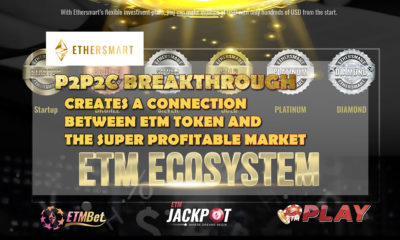
 Press Release5 years ago
Press Release5 years agoP2P2C BREAKTHROUGH CREATES A CONNECTION BETWEEN ETM TOKEN AND THE SUPER PROFITABLE MARKET
-
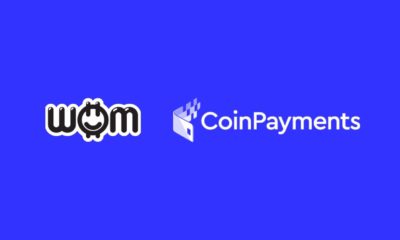
 Blockchain5 years ago
Blockchain5 years agoWOM Protocol partners with CoinPayments, the world’s largest cryptocurrency payments processor
-

 Press Release5 years ago
Press Release5 years agoETHERSMART DEVELOPER’S VISION MADE FINTECH COMPANY BECOME DUBAI’S TOP DIGITAL BANK
-
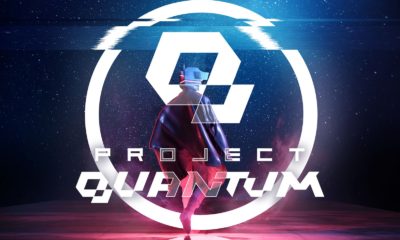
 Press Release4 years ago
Press Release4 years agoProject Quantum – Decentralised AAA Gaming
-

 Blockchain5 years ago
Blockchain5 years agoWOM Protocol Recommended by Premier Crypto Analyst as only full featured project for August
-

 Press Release5 years ago
Press Release5 years agoETHERSMART DEVELOPER’S VISION MADE FINTECH COMPANY BECOME DUBAI’S TOP DIGITAL BANK
-
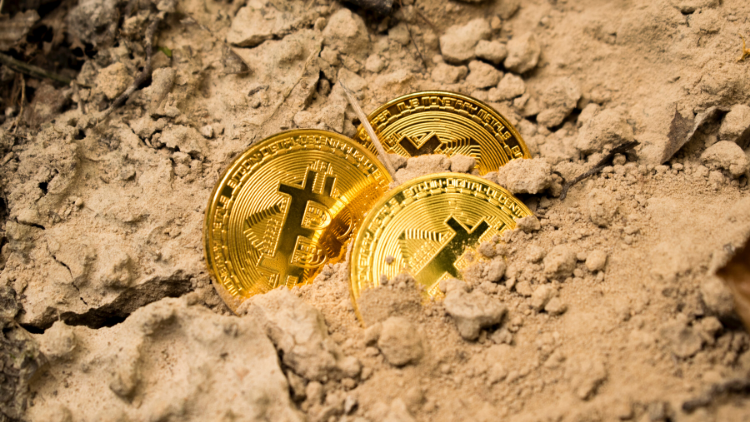
 Blockchain5 years ago
Blockchain5 years ago1.5 Times More Bitcoin is purchased by Grayscale Than Daily Mined Coins






